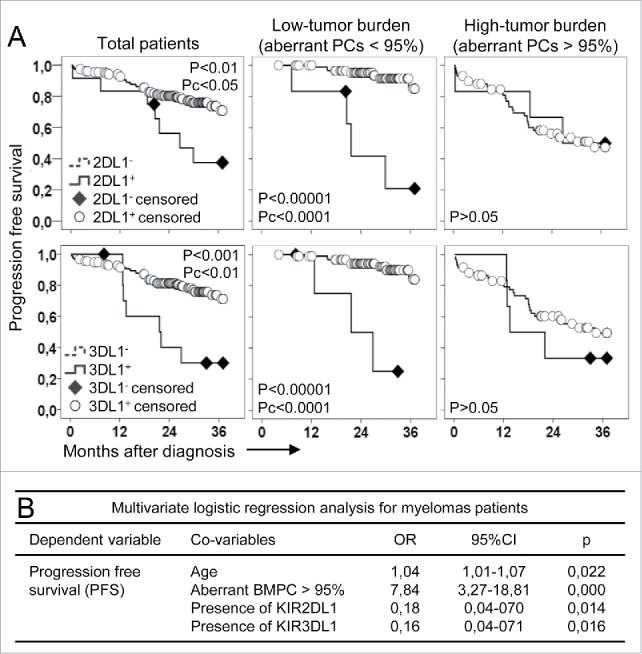Figure 2.

The impact of KIR genotype on myeloma progression free survival depends on tumor burden. (A) Patients with KIR2DL1− (KIR2DL1−L2+L3−, p < 0.01; Pc p < 0.05; top, left graphs) or KIR3DL1− (p < 0.001; Pc < 0.01; bottom, left graphs) genotypes showed significant lower progression free survival than the remaining patients. These differences were more intense and significant (p < 0.00001; Pc p < 0.0001 for both genotypes, middle graphs) in patients with low-tumor burden (aberrant plasma cells -PCs- <95%, equivalent to 6.4 ± 0.8% of PCs in the bone marrow). No differences in the progression free survival were observed in patients with high-tumor burden (aberrant PCs > 95%, equivalent to 29.3% ± 2.7% of PCs in the bone marrow; right graphs). (B) Multivariate logistic regression analysis confirmed that age (OR, 1.04; p = 0.022) and high-tumor burden (OR, 7.84; p = 0.000) significantly and independently increased the risk of myeloma progression. However, presence of any KIR2DL1 (OR, 0.178; p = 0.014) or KIR3DL1 (OR, 0.164; p = 0.016) significantly and independently protected from disease progression.
